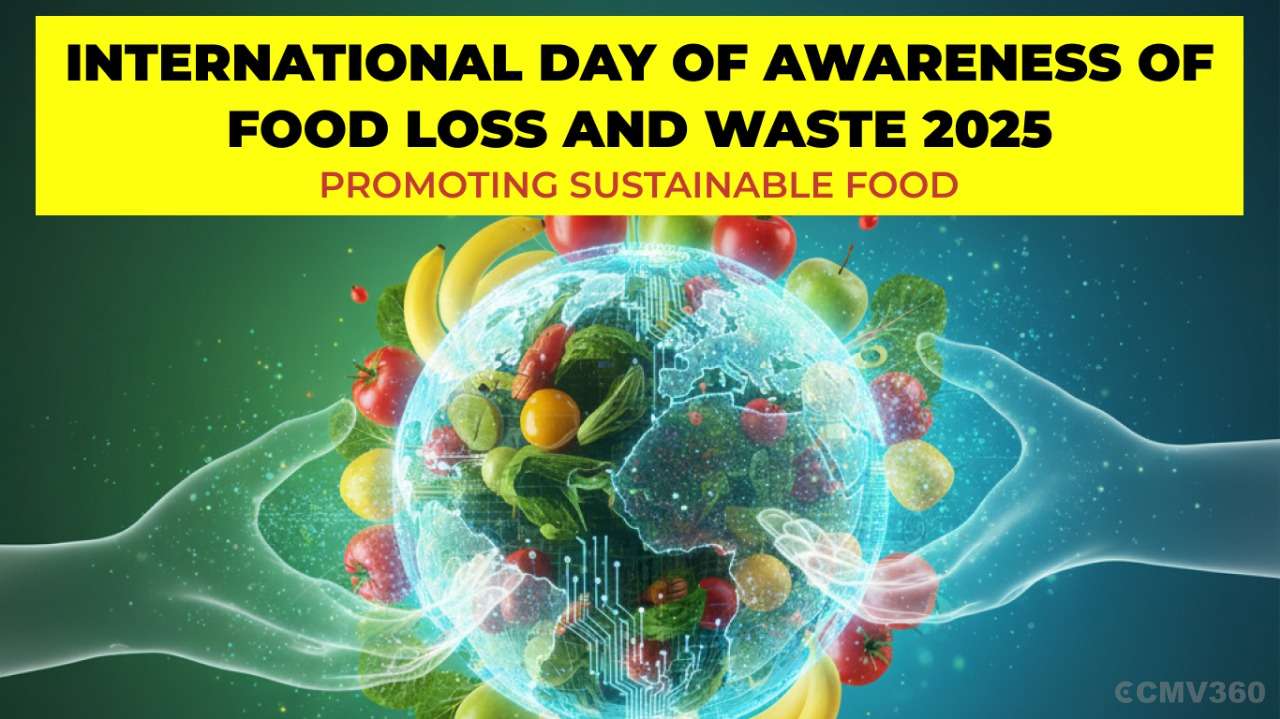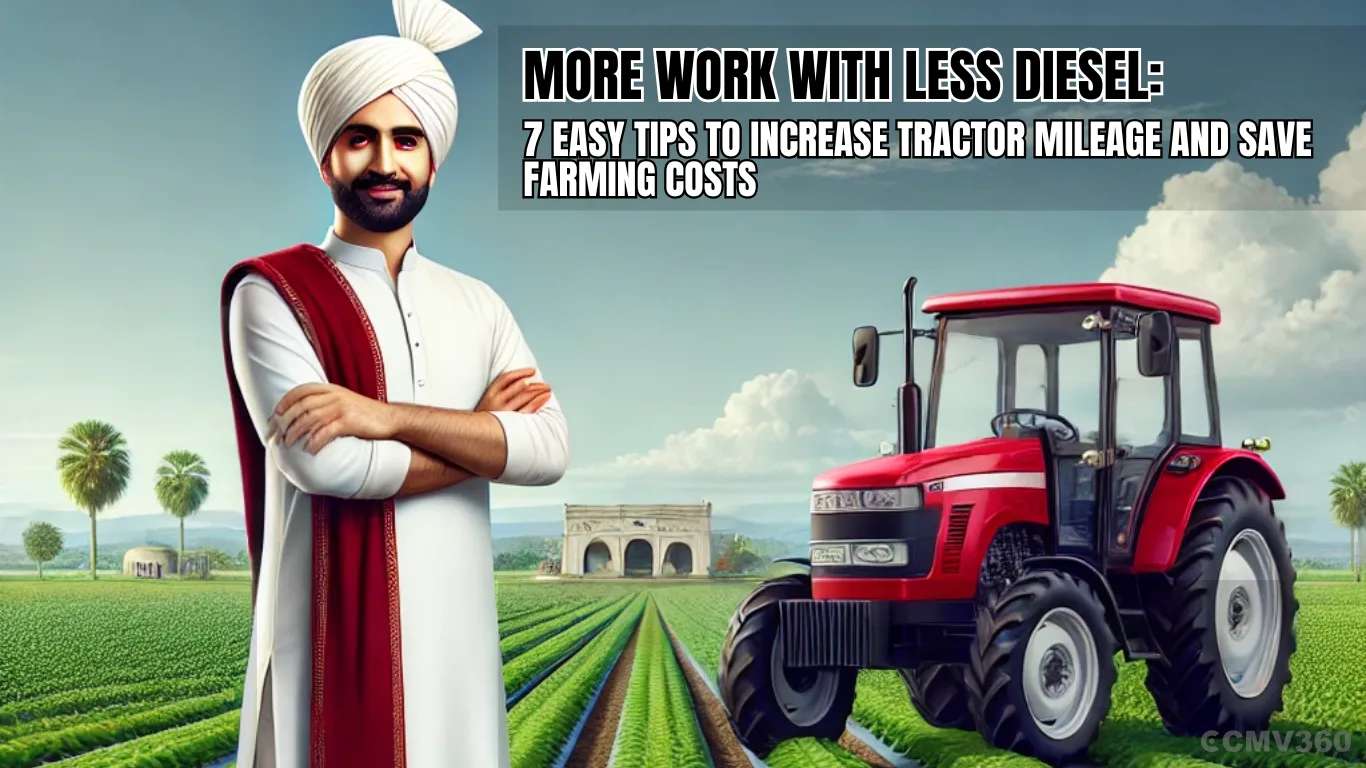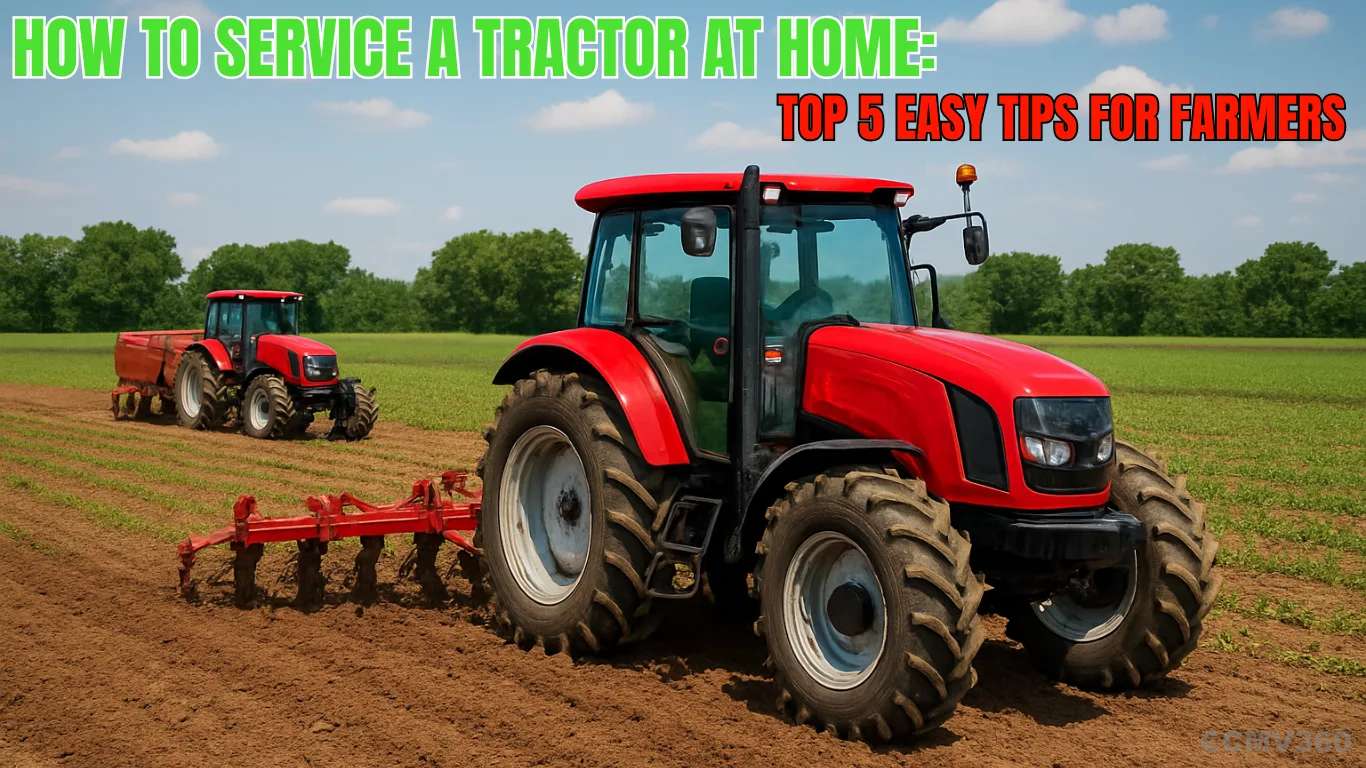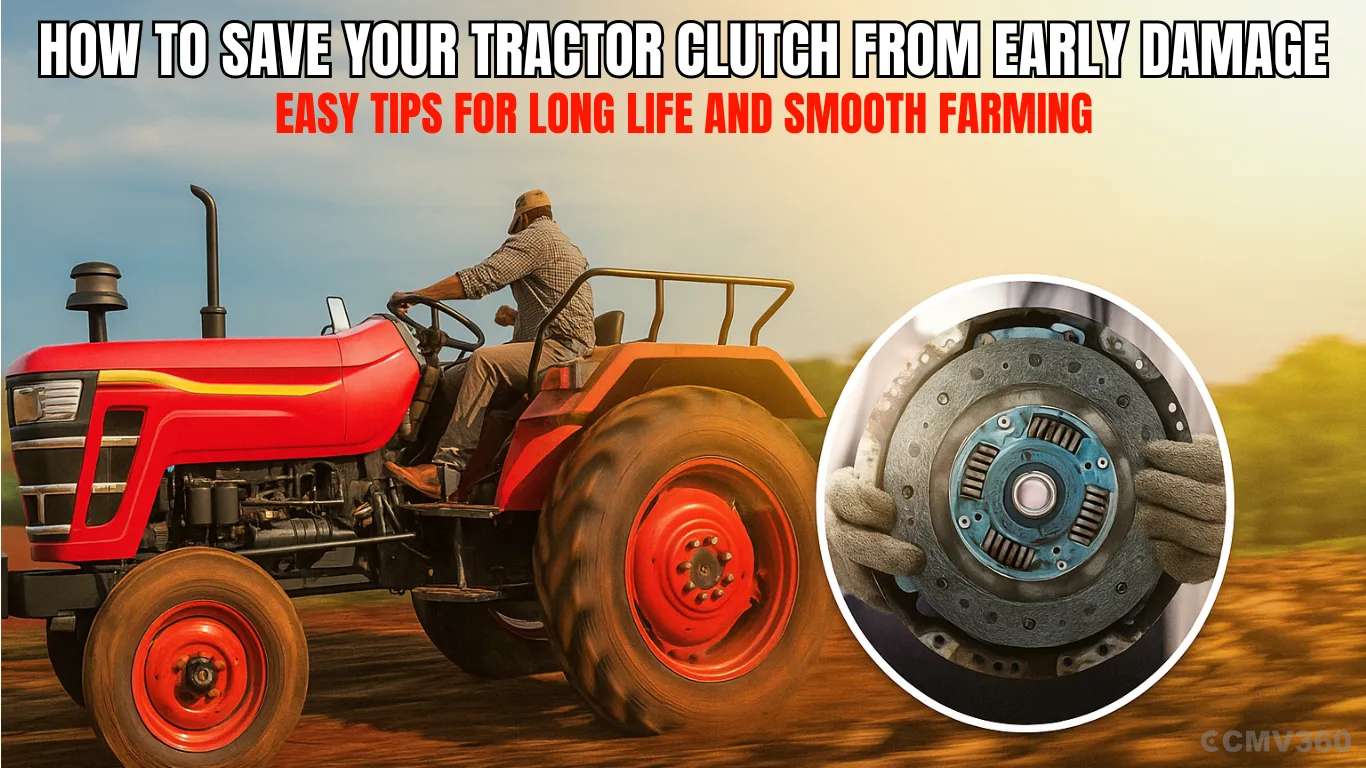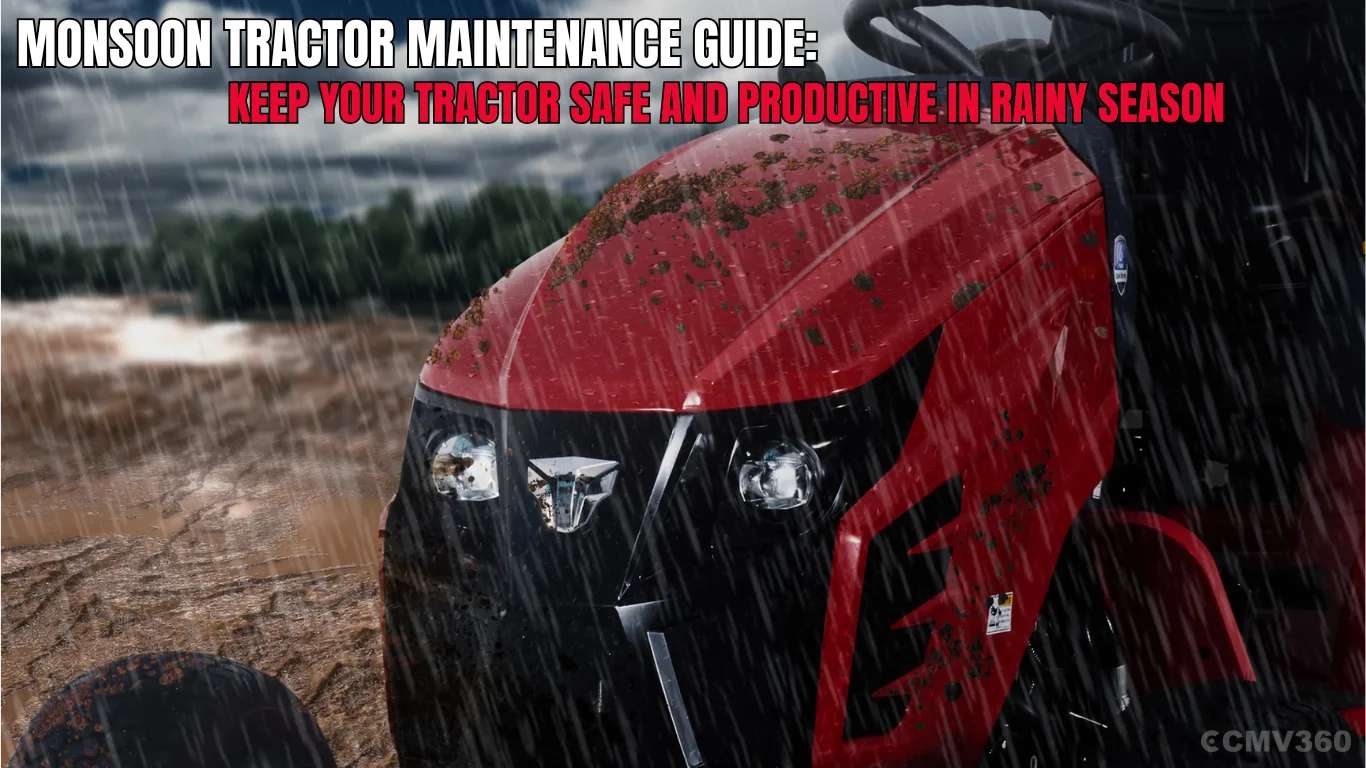Ad
Ad
Subsoiler vs. Ripper - Which Is Right for You?
Rippers are primarily designed for breaking up compacted soil layers and shattering hardpans whereas a subsoiler shatters the hardpan with minor cracks and slits, allowing for better soil aeration and root penetration.

Subsoilers and Rippers are essential gadgets in modern Indian agriculture. They tackle soil structure degradation, improve water penetration, and encourage deeper root growth, all of which lead to higher crop production and more sustainable agricultural practices.
Understanding these tools allows farmers to select the best one for their fields. In this article, we have discussed the advantages and disadvantages of rippers and subsoilers.
Rippers
Rippers are primarily designed for breaking up compacted soil layers and shattering hardpans. A ripper can cut weed roots beneath the soil’s surface and perform operations like ripping, digging, and tearing.
They are effective in improving soil aeration and water infiltration. Rippers are commonly used for deep tillage to address soil compaction issues and promote root growth.
Subsoiler
A subsoiler is designed to loosen the soil. It shatters the hardpan with minor cracks and slits, allowing for better soil aeration and root penetration.
They create vertical cuts in the soil without inverting or disturbing the upper soil layers. Subsoiling improves root penetration, water drainage, and nutrient absorption.
Also Read: Which is the best tractor brand Mahindra vs Eicher tractor
Major Difference Between Ripper and Subsoiler
Rippers and subsoilers are both agricultural implements used for soil tillage, but they serve different purposes and have distinct designs. Here are the major differences between ripper and subsoiler based on various parameters:
Depth of Operation
Ripper: Rippers typically operate at greater depths compared to subsoilers. They can reach deep into the soil profile, often penetrating below the plough layer to break up compacted subsurface layers. It reaches depths of around 35–45 cm (14–18 inches).
Subsoiler: Subsoilers operate at shallower depths compared to rippers. They focus on breaking up compacted layers just below the plough layer without extensively disturbing the upper soil structure. Subsoilers typically work to a depth of approximately 60 cm (24 inches).
Design
Ripper: Rippers usually have multiple shanks or tines arranged in a row. The shanks are equipped with points or blades designed to penetrate and cut the soil vertically. Some rippers may also have wings to create a wider soil disturbance.
Subsoilers: Subsoilers typically have a single shank or a few closely spaced shanks. The design aims to create narrow fractures in the soil, minimizing surface disturbance. Subsoilers may have a variety of tips or points depending on the specific soil conditions.
Soil Disturbance
Ripper: Rippers can cause significant surface soil disturbance due to their deep penetration and the use of multiple shanks. This may result in some soil inversion and mixing.
Subsoiler: Subsoilers cause minimal surface disturbance as they focus on breaking up compacted layers below the surface. The goal is to improve soil structure without extensively disturbing the topsoil.
Application
Ripper: Rippers are often used in situations where deep tillage is required, such as addressing severe soil compaction or preparing the soil for deep-rooted crops.
Subsoiler: Subsoilers are employed to alleviate shallow to moderate soil compaction without disrupting the overall soil structure. They are commonly used in conservation tillage practices.
Price Range
Rippers are priced between Rs 40,000 and Rs 95,000.Subsoilers: The price of subsoilers ranges from Rs 30,000 to Rs 99,000.
Top Brands
Ripper: Fieldking is a main brand for rippers.Subsoiler: Brands like Fieldking, Lemken, and Mahindra offer subsoilers.
In short, both rippers and subsoilers contribute to soil improvement, but their designs and applications differ. Rippers focus on deep soil tillage and may cause more surface disturbance, while subsoilers operate at shallower depths with minimal surface disruption, targeting compacted layers beneath the surface.
Ripper and Subsoiler Advantages and Disadvantages
Rippers and subsoilers are agricultural implements used in soil preparation and cultivation. Each has its own set of advantages and disadvantages, and their suitability depends on the specific requirements of the soil and the desired outcome of the cultivation process.
Advantages of Ripper
Increased Water Infiltration: The deep ripping process facilitates water infiltration into the soil, reducing surface runoff and enhancing water retention.
Deep Soil Penetration: Rippers are designed to penetrate the soil deeply, breaking up hardpans and compacted layers. This allows for better root penetration and water absorption.
Improved Drainage: By breaking up compacted soil layers, rippers enhance drainage, preventing waterlogging and improving aeration.
Residue Incorporation: Rippers can effectively incorporate crop residues into the soil, promoting decomposition and nutrient cycling.
Disadvantages of Ripper
Fuel Consumption: Operating rippers requires substantial power, leading to increased fuel consumption, which can be a significant cost factor.
Surface Disturbance: Ripping can cause significant surface disturbance, leading to soil erosion if not properly managed. This is a concern, especially on sloping terrain.
Limited Weed Control: While rippers help with soil preparation, they do not provide effective weed control, which may necessitate additional measures.
Advantages of Subsoiler
Soil Loosening: Subsoilers are designed to loosen the soil at depths below the normal ploughing depth, breaking up compacted layers without inverting the soil.
Reduced Surface Disturbance: Compared to rippers, subsoilers generally cause less surface disturbance, making them suitable for minimizing erosion risks.
Water Filtration: Subsoiling enhances water infiltration by creating channels for water movement through the soil profile.
Enhanced Root Growth: Improved soil structure resulting from subsoiling promotes deeper root penetration, leading to better nutrient uptake by plants.
Disadvantages of Subsoiler
Limited Surface Residue Incorporation: Subsoilers are not as effective as rippers in incorporating surface residues into the soil, which may require additional operations.
Equipment Cost: Subsoiling equipment can be expensive, and not all farmers may have access to or afford this specialized machinery.
Potential Soil Compaction: Improper use of subsoilers or using them in wet soil conditions can lead to compaction issues rather than alleviating them.
Also Read: Advantages of Tractor Loans for Farmers in India
Conclusion
In conclusion, both rippers and subsoilers play crucial roles in soil management, but their effectiveness depends on factors such as soil type, moisture content, and the specific goals of the farmer.
Integrating these tools wisely into a comprehensive soil management plan is the key to maximizing their benefits while minimizing their disadvantages.
Features & Articles
International Day of Awareness of Food Loss and Waste 2025: Promoting Sustainable Food
Explore the importance of the International Day of Awareness of Food Loss and Waste 2025, its theme, impact, and solutions for building sustainable, efficient, and equita...
25-Sep-25 10:01 AM
Read Full NewsMore Work with Less Diesel: 7 Easy Tips to Increase Tractor Mileage and Save Farming Costs
Follow 7 simple tips to improve tractor mileage, save diesel, and lower farming costs. Learn about the top mileage tractors in India for 2025 and make farming more profit...
17-Sep-25 07:25 AM
Read Full NewsHow to Service a Tractor at Home: Top 5 Easy Tips for Farmers
Learn 5 easy tractor servicing tips at home to save money, improve engine performance, and extend tractor life. Simple steps for oil, filters, radiator, greasing, battery...
09-Sep-25 12:53 PM
Read Full NewsHidden Cost of Buying a Tractor in India Every Buyer Must Know About
Learn about tractor hidden costs like registration, insurance, implements, fuel, and maintenance to plan your budget smartly and avoid unexpected expenses....
12-Aug-25 01:22 PM
Read Full NewsHow to Save Your Tractor Clutch from Early Damage: Easy Tips for Long Life and Smooth Farming
Prevent early clutch failure in tractors with easy maintenance tips and daily checks for better performance and longer life....
04-Aug-25 11:59 AM
Read Full NewsMonsoon Tractor Maintenance Guide: Keep Your Tractor Safe and Productive in Rainy Season
Follow these easy monsoon maintenance tips to protect your tractor from rust, breakdowns, and damage during rainy season....
17-Jul-25 11:56 AM
Read Full NewsAd
Ad
As featured on:


Registered Office Address
Delente Technologies Pvt. Ltd.
M3M Cosmopolitan, 12th Cosmopolitan,
Golf Course Ext Rd, Sector 66, Gurugram, Haryana
pincode - 122002

